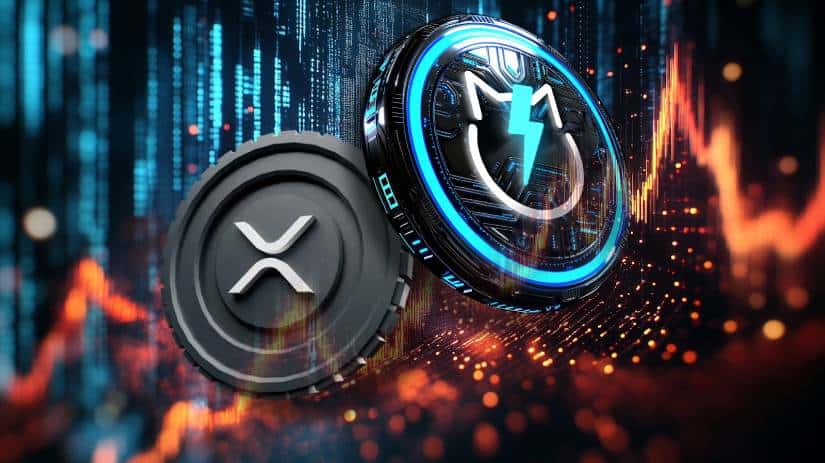Why XRP’s Price Momentum Stalled After a Massive Rally
XRP experienced a significant surge of 445.15% between November 5 and December 2, 2024, following the U.S. election, outperforming major cryptocurrencies like Bitcoin and Ethereum. However, despite favorable regulatory developments, including Ripple's landmark settlement with the SEC, the token's price has stagnated, trading sideways through early 2025. Analysts attribute this stagnation to Ripple's centralized control over XRP's supply, which has been a key constraint on its growth. While the asset initially showed strong performance, its inability to sustain momentum highlights ongoing challenges in the market. This summary explores the factors behind XRP's price behavior and the implications for its future trajectory.
Why XRP Price is Not Surging?
XRP emerged as one of the top-performing cryptocurrencies following the 2024 U.S. election, rallying 445.15% between November 5 and December 2. Yet, despite favorable regulatory developments—including Ripple's landmark settlement with the SEC—the token has since stagnated, trading sideways through early 2025.
Analysts point to Ripple's centralized control over XRP's supply as a key constraint. While the asset outperformed Bitcoin and ethereum with 436.6% annual growth, its Q1 2025 returns dwindled to a mere 0.45%, signaling fading momentum after the post-election euphoria.
SEC’s July 10 Meeting Could Signal Pivotal Moment in Ripple Case
The U.S. Securities and Exchange Commission has scheduled a closed-door meeting for July 10, fueling speculation about a potential resolution to its protracted legal battle with Ripple Labs. The agenda’s vague reference to 'enforcement matters' has ignited Optimism among XRP holders, who view this as a possible inflection point for the cryptocurrency’s regulatory status.
Market participants are weighing the likelihood of the SEC abandoning its appeal against Ripple—a move that WOULD remove a significant overhang for XRP. Such an outcome could catalyze price movement after years of legal uncertainty, though seasoned observers caution against premature celebration.
Former SEC attorney Marc Fagel has tempered expectations, noting that such meetings typically address routine matters. The crypto community remains divided, with some pointing to procedural possibilities for weekend actions despite the agency’s standard operating hours.
XRP Price Forecast: Steady Growth Potential Through 2035
XRP's price trajectory remains a focal point for investors as Ripple advances its regulatory agenda. Trading at $2.22 in July 2025, the asset shows modest weekly gains of 1.35% despite a 440% annual surge fueled by legal victories and banking license pursuits.
A hypothetical 2% monthly compounding scenario through 2035 would demonstrate crypto's long-term growth mechanics. Such projections highlight how incremental gains could accumulate significantly over a decade, though market realities rarely follow linear paths.
Ripple's institutional strategy—including Federal Reserve master account negotiations—creates fundamental support absent in purely speculative assets. The disconnect between operational progress and price action suggests either market inefficiency or prudent discounting of regulatory hurdles.
Ripple CEO to Testify Before Senate as XRP Price Braces for Volatility
Ripple CEO Brad Garlinghouse is set to appear before the U.S. Senate Banking Committee on July 9, marking a pivotal moment for cryptocurrency regulation. The hearing, titled "From Wall Street to Web3: Building Tomorrow’s Digital Asset Markets," aims to address the lack of structured oversight for assets like XRP. Garlinghouse emphasized the need for constructive legislation to foster innovation while protecting consumers.
The testimony coincides with significant legislative shifts, including the Senate's approval of the GENIUS Act, which outlines regulatory frameworks for stablecoins. The House is also preparing for "Crypto Week," signaling heightened activity in digital asset policymaking. Market participants anticipate potential volatility in XRP as regulatory clarity unfolds.
Ripple CEO Urges Senate for Crypto Clarity as U.S. Risks Falling Behind
Ripple CEO Brad Garlinghouse testified before the Senate Banking Committee, emphasizing the urgent need for regulatory clarity in the U.S. crypto market. He highlighted Ripple's decade-long mission to enable frictionless global payments through blockchain technology, citing the XRP Ledger as a scalable solution for cross-border settlements.
Garlinghouse pointed to Ripple's compliance-first approach, noting its 60+ global licenses, and framed the company's strategy as cooperative rather than adversarial with regulators. The testimony follows Ripple's landmark legal victory against the SEC, which industry observers view as a turning point for crypto regulation.
The absence of clear rules, Garlinghouse argued, threatens America's position in blockchain innovation. His appearance comes as lawmakers face increasing pressure to establish comprehensive crypto legislation that balances consumer protection with technological advancement.
Ripple Appoints BNY Mellon as Custodian for RLUSD Stablecoin Reserves
Ripple has selected BNY Mellon, the global custody giant overseeing $53 trillion in assets, as the primary custodian for reserves backing its U.S. dollar-pegged stablecoin RLUSD. The partnership will leverage BNY Mellon's transaction banking infrastructure for minting, redemption, and asset safeguarding.
The New York-regulated RLUSD, launched in December 2023 with over $500 million in circulation, maintains its peg through short-term Treasuries and cash equivalents. "BNY Mellon combines institutional-grade custody with progressive digital asset infrastructure," said Ripple's stablecoin lead Jack McDonald.
This custody agreement coincides with Ripple's parallel applications for a national banking charter and Federal Reserve master account—moves that could deepen RLUSD's integration with traditional finance. The stablecoin sector gains momentum as U.S. regulators advance frameworks for dollar-digital hybrids.

